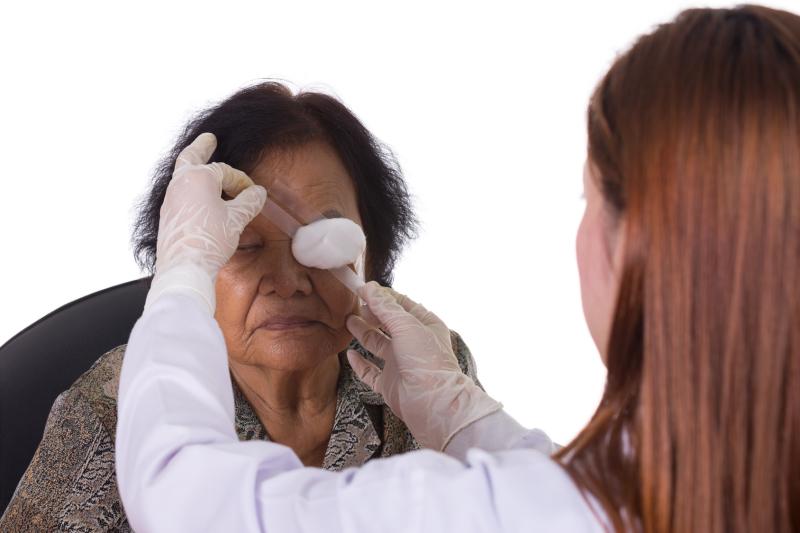
The structures of individual retinal layer change with age, according to a new Singapore study.
“In this population-based study, we applied a publicly available [optical coherence tomography] software to segment the 10 retinal layers and examined the effect of age on specific retinal layers in normal and healthy participants,” said researchers, noting that aside from age, there was also an “influence of gender, ethnicity and axial length on specific retinal layers.”
The study included 3,043 eyes from 2,047 participants (mean age, 56±8 years; 50 percent female) enrolled in the Singapore Epidemiology of Eye Diseases study. The sample was predominantly of Chinese ethnicity (47 percent), who tended to be younger, more myopic, and have flatter corneas and smaller-looking optic disks, relative to the Malay and Indian participants. [Sci Rep 2019;9:20352]
Multivariate regression models, adjusted for factors found to be significant in the age, ethnicity and gender models, showed that most of the macular layers displayed significant changes as a person ages.
For instance, the ganglion cell layer saw significant thinning in both its inner (β, –2.07, 95 percent confidence interval [CI], –2.42 to –1.71) and outer (β, –0.93, 95 percent CI, –1.12 to –0.74) rings per decade of ageing. The same was true for the inner plexiform layer (inner ring: β, –0.94, 95 percent CI, –1.16 to –0.72; outer ring: β, –1.25, 95 percent CI, –1.41 to –1.09) and inner nuclear layer (inner ring: β, –0.50, 95 percent CI, –0.72 to –0.29; outer ring: β, –0.94, 95 percent CI, –1.08 to –0.79).
A similar pattern of change with age was found for macular thickness (inner ring: β, –5.76, 95 percent CI, –6.68 to –4.84; outer ring: β, –6.12, 95 percent CI, –6.89 to –5.35). In comparison, both the outer segment photoreceptor/retinal pigment epithelium complex and the outer nuclear layer displayed significant thinning in the fovea, along with the inner and outer rings.
Majority of the layers thinned with age, including the outer plexiform later and the retinal pigment epithelium complex.
However, some increases also occurred. The retinal nerve fibre layer (RNFL), for example, significantly thickened at the fovea (β, 0.98, 95 percent CI, 0.76–1.20). The photoreceptor inner/outer segments saw increases at the inner and outer rings, while the inner/outer segment junction showed gains at the fovea and inner ring.
The researchers also found that sex and ethnicity were important factors. Men, for instance, had generally thicker retinal layers than women. Those of Chinese ethnicity had the thickest RNFL.
“[T]he data presented in this study show a substantial difference in the structure of individual retinal layers with advancing age,” the researchers said. “Furthermore, our results suggest that these differences are impacted by gender, ethnicity and axial length.”
“Given that the subjects in the present study were free from eye diseases and diabetes, the results represent true age-related changes. Further studies are required to better understand that the mechanisms underlying the age-, gender- and ethnicity-dependence of retinal morphology,” they added.